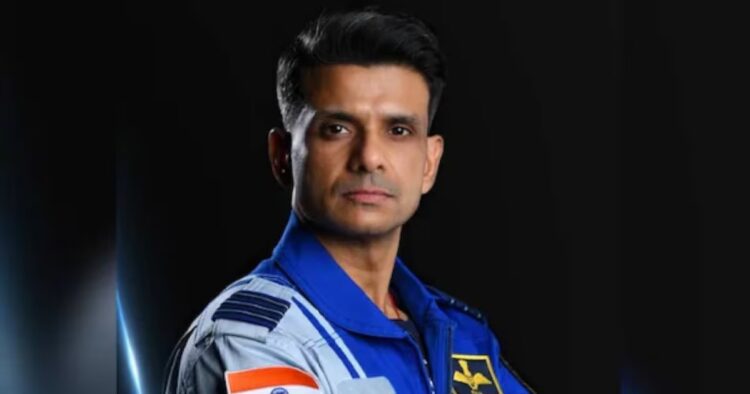The Indian Space Research Organisation (ISRO) announced that Wing Commander Shubhanshu Shukla of the Indian Air Force has been chosen as the prime astronaut for an upcoming mission to the International Space Station (ISS). This mission is a joint effort between ISRO and NASA, following an agreement made during Prime Minister Narendra Modi’s visit to the US in June 2023.
ISRO-NASA Collaboration
As part of this collaboration, ISRO’s Human Space Flight Centre (HSFC) signed a Space Flight Agreement (SFA) with Axiom Space Inc., a NASA-identified service provider. This partnership will facilitate the inclusion of Indian astronauts in the Axiom-4 mission to the ISS.
The National Mission Assignment Board recommended two Indian Air Force officers for the mission: Group Captain Shubhanshu Shukla as the prime Mission Pilot and Group Captain Prasanth Balakrishnan Nair as the backup. The final approval for their flight will come from the Multilateral Crew Operations Panel (MCOP).
Training for the selected astronauts, known as Gaganyatris, will begin in early August. During their time on the ISS, they will conduct scientific research and technology experiments and participate in space outreach activities. This mission aims to enhance India’s human spaceflight capabilities and strengthen ISRO-NASA cooperation.
The Gaganyaan mission is India’s first human spaceflight program, aiming to send a crew of three to a 400 km orbit for a three-day mission before safely returning to Earth. Prime Minister Modi announced the names of four Indian Air Force pilots for this mission in February, including Group Captain Shubhanshu Shukla.
The chosen astronauts were trained at the Yuri Gagarin Cosmonaut Training Centre in Russia. They received their ‘astronaut wings’ from Prime Minister Modi during a review of the Gaganyaan mission at the Vikram Sarabhai Space Centre. The mission requires the development of critical technologies, including a human-rated launch vehicle, life support systems, and crew management aspects.
Before the actual human spaceflight, ISRO plans several precursor missions to demonstrate the necessary technologies. These include Integrated Air Drop Tests (IADT), Pad Abort Tests (PAT), and Test Vehicle (TV) flights. The Gaganyaan mission will use the LVM3 rocket, a reliable heavy-lift launcher, with a strong emphasis on human safety.
In 2023, India achieved significant milestones in space exploration, including the successful landing of Chandrayaan-3 on the Moon’s South Pole and the launch of Aditya-L1, India’s first solar mission. These achievements have boosted India’s status in the global space economy and energized the private space sector.
Looking ahead, India aims to establish its own space station, ‘Bharatiya Antariksha Station,’ by 2035 and send the first Indian astronaut to the Moon by 2040.

















Comments